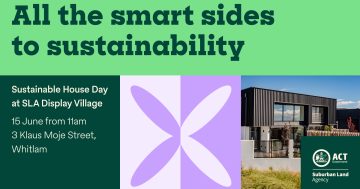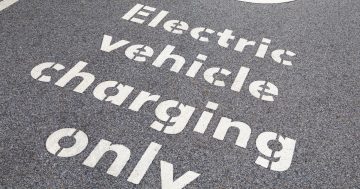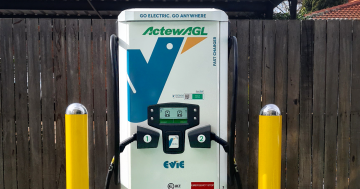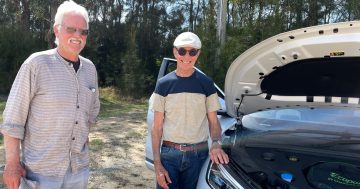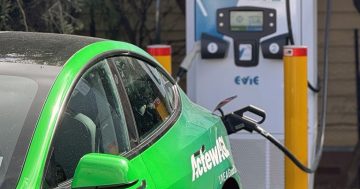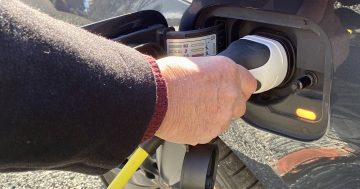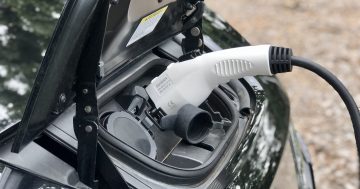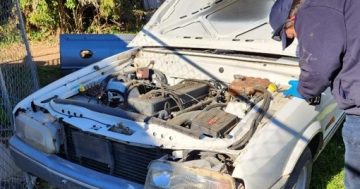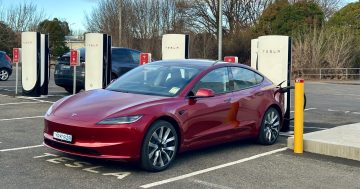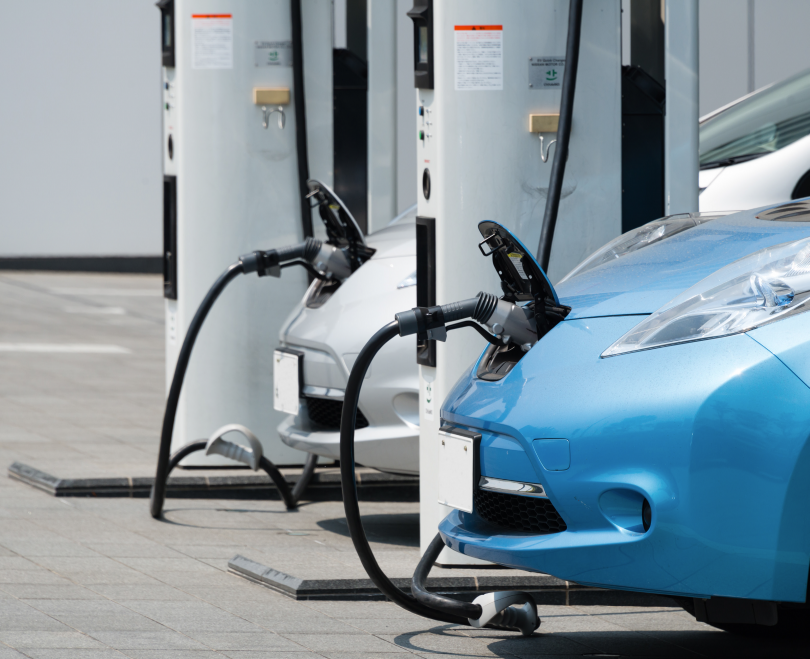
File photo of electric vehicle charging stations.
With the ACT’s transition to a zero-emissions plan for all vehicles, Canberra’s cousins over the border in Queanbeyan, Bungendore and Braidwood are catching up with plans to install electric vehicle charging stations there.
A spokesperson from Queanbeyan-Palerang Regional Council (QPRC) told Region Media consideration is being given to electric vehicle (EV) charging stations as part of the Council’s master plans for Bungendore and Queanbeyan.
An electric vehicle charging station is also earmarked for Braidwood.
Once complete, the EV charging stations will allow motorists to travel between Canberra and Batemans Bay with the knowledge that a charging station is close by.
The QPRC spokesperson said while electric vehicle charging stations are still very much in the concept stage, there was at least one comment requesting consideration be given to electric vehicle charging points in the public exhibition period for the car parking strategies for Queanbeyan and Bungendore.
“Comments on the recently exhibited concept design plans for a new off-street car park in Bungendore have not yet been presented to Council, however we can advise that more than 40 submissions were received, many of which responded positively to the question, “Do you think the car park should include toilet facilities, smart lighting, electric vehicle charging stations etc?” the spokesperson said.
“The Bungendore car park is only at the concept design stage. Any new car parks proposed in the Queanbeyan CBD Spatial Master Plan are yet to move to the design stage. The number and location of EV charging stations will be considered in the future.”
In Queanbeyan, multi-storey car parks are being proposed in the CBD. Each would include electric vehicle charging stations, smart lighting, smart parking, WiFi and CCTV.
In Bungendore, a report on the community consultation should go back to Council in the coming months. The off-street parking area is intended to also accommodate additional usage other than traditional car parking such as a community market space. It is also likely to include electric vehicle charging stations, WiFi, CCTV, smart lighting and other technology.
In Braidwood, a December 2018 Council meeting saw Council agree to allow the NRMA to install an electric vehicle charging station as part of any future car park redevelopment. The station would provide charging facilities for two car parking spaces.
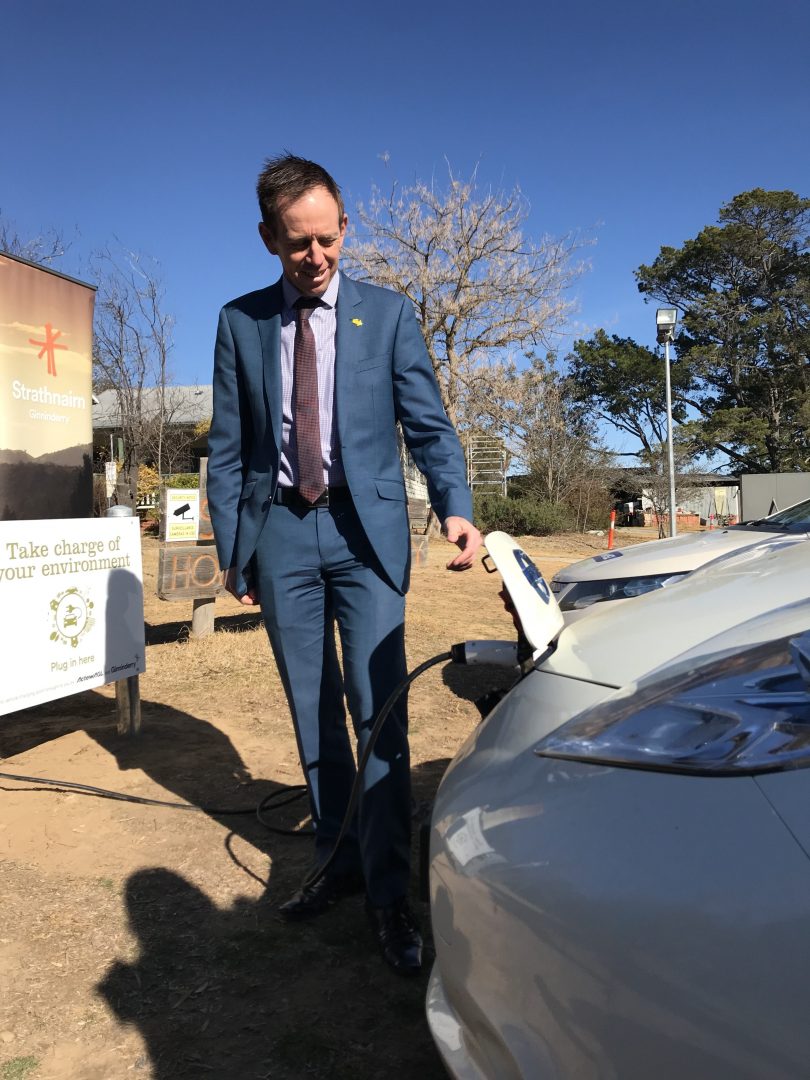
Minister Shane Rattenbury charging an electric car at the launch of the new West Belconnen charging station. Photo: Supplied.
Two new electric vehicle charging stations were unveiled on 26 August as part of the ACT Government’s transition to a zero-emissions fleet. Three more are located over the border at Queanbeyan, Wamboin and Gundaroo.
The new Canberra stations, located at the West Belconnen Child and Family Centre building in Holt, are part of a growing ACT Government fleet network of 46 charging stations that will be fully operational in the next few weeks, with more stations set to be installed in 2020.
“By 2020 the ACT will be powered by 100 per cent renewable electricity, after which time our biggest source of greenhouse gas emissions – at over 60 per cent – will come from transport,” Minister for Climate Change and Sustainability Shane Rattenbury said.
“At a time of climate emergency, the ACT is proudly putting our climate first. As we move away from a reliance on fossil fuels, we’re leading by example in transitioning our fleet to electric vehicles.”
Zero emissions vehicles cause less air and noise pollution, have lower running costs, don’t incur stamp duty and receive a 20 per cent discount on registration fees.
There are over 330 privately registered EVs in the ACT including 90 plug-in hybrids. These owners have access to 29 public charging stations located across the region, one of the highest concentrations of EV vehicle charging stations in the country.
The NRMA has also committed $10 million to build Australia’s largest fast-charging network to support the electrification of the transport sector in NSW and the ACT.
NRMA Chief Investment Officer Rachel Wiseman said motorists are worried about where their next charge will be, particularly outside of capital cities.
“The NRMA is committed to delivering a solution to ‘range anxiety’, by installing an extensive network of electric vehicle fast chargers right across NSW and the ACT. Our aim is that 95 per cent of EV journeys are within 150 kilometres of one of our charging stations,” Ms Wiseman said.
The average cost of running a car on liquid fuel is $1.50 per litre, while the average cost of running an electric vehicle is $0.33. EVs also require far less maintenance, which equates to significant cost benefits for motorists.
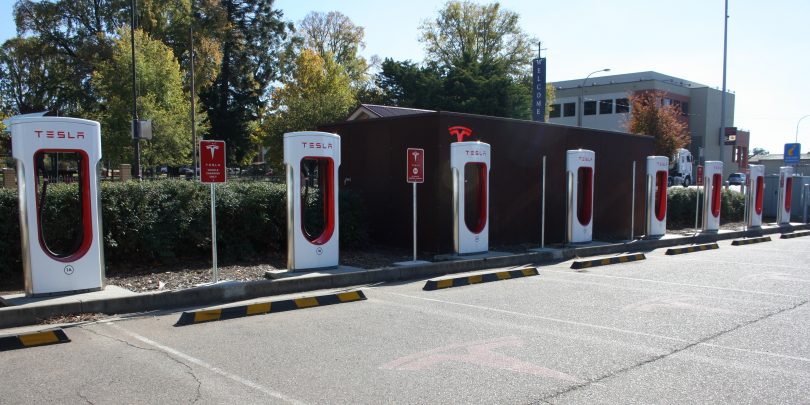
Tesla superchargers for electric cars at the Goulburn Visitor’s Centre. Photo: Supplied.












